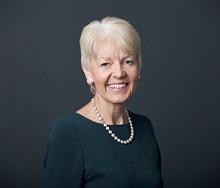We ask Fay Gillott about the rise of client care at the Bar
When the Bar was first established in the Four Inns of Court during the 13th and 14th century, practising as a barrister was a social occupation for the wealthy upper classes. Remuneration was not a consideration and competition was an exchange of wits in the courtroom. Barristers received “backhanders” in the form of money deposited in a pocket on the back of their left shoulder, said to be done in this way to avoid the client’s perceived worth of his barrister influencing counsel’s performance!
As time moved on, and those entering the profession required an income, it became the responsibility of their clerks to act as the savvy entrepreneurs, marketing their governors and discussing fee rates with professional clients, thus allowing counsel’s conversations with instructing solicitors to cover the matters and merits of cases without reference to cost.
Clerks were effective at managing and selling their members’ practices. An aspect of clerking that has remained a key marketing ploy throughout time, and continues today, is the clerks’ ability to ‘sell in’ an alternative member of chambers when the barrister requested is not available.
Prior to 1989 barristers relied heavily on their clerks, their own performance in court and word of mouth to sell their practices. Counsel, on their feet in court, were advocates, not only for their client, but also for their own businesses. Successes were used by the clerks to promote their members. The marketing tool of the time was the telephone.
In 1989 came the opportunity for change when the Bar’s advertising rules were relaxed. Interestingly, it was entrepreneurs external to the profession who took immediate advantage. Within the next two years the now well established Legal 500 and Chambers and Partners directories began ranking barristers, following research of the professions most able practitioners. A symbiotic relationship developed over time between practitioner and directory.
At around this time other changes were happening. The 1990s saw the introduction of database software for recording instructions received, the value of instructions, the location of the court, who was being instructed etc.. This provided the means for statistical analysis of work coming into chambers. For those sets with members less precious about the self-employed nature of their work and willing to share information the new databases developed by the likes of Bar Squared and Meridian held a wealth of marketing knowledge, knowledge that allowed sets to develop strategic business plans and monitor success in accordance with their plans.
The nature of barristers’ practices was also changing. Pressure on fees meant many turned away from or did not even begin a practice in crime but looked to other areas of law. Many cases reached conclusion through mediation outside of the courts, thus reducing the opportunity for barristers to impress when seen on their feet in court. Restrictions on the number of advocates accepted into Bar School were relaxed. In 2004 the Bar Council introduced the Public Access rules that allowed members of the public to instruct barristers directly without the need for a solicitor. While few clients sought to instruct barristers directly, many became internet savvy and no longer accepted, as a matter of course, their solicitor’s recommendations, preferring instead to carry out their own research.
One further complication for the barrister came in 1994 when solicitors could secure rights of audience in the higher courts.
The accumulation of change led to greater competition at the Bar and increased the need for sophisticated marketing of both members and Chambers. Sets reacted variously to these changes. Some expected the senior clerk to engage with and embrace the opportunities offered by change and to ward off threats; others employed experienced and highly qualified marketers to work alongside and complement clerking skills.
Although not always the case, traditionally most clerks entered into a training contract with a set of chambers on leaving school, without formal qualifications. Training from the senior clerk would be in the administration of barristers’ practices and the verbal promotion of the members of the set. This served the members and chambers well for several hundred years and continues to be an important aspect of most chambers’ operations.
Today, members of chambers remain self-employed, but the growth in the size of sets of chambers means that many are now multi-million pound businesses. These businesses, like all other commercial enterprises, must be properly managed. Many sets responded to their growth with the appointment of an experienced senior manager to the role of chief executive or chambers’ director to oversee the business.
Greater emphasis on the use of the written word came with the need to create websites for the set, draft directory entries, prepare brochures and articles, and draft pitch documentation. Forward thinking sets have responded to change by employing experienced and qualified marketers into their senior management team to work alongside the chief executive and the senior clerk.
These individuals are best placed to use their sets internal data alongside market analytics to create strategic marketing plans that guide the clerks in promoting both chambers and its members. They are also well placed to look for the competitive edge when opportunities arise in an ever changing legal environment.
Some sets have also trained/continuously train their clerks, in business development and marketing skills, and some clerks, with a talent for these areas, have taken it to a higher level. Either way, it has enabled them to apply their new skills directly to their ‘front-line’ work with clients with the knowledge and confidence to explore and cultivate new business opportunities.
A few sets have taken marketing a step further and appointed a PR agent to assist with raising the profile of the individual barristers and the set. When it comes to raising profile, the important point is to make sure this activity is tightly woven in to the rest of the marketing mix – to the extent in fact that all the different threads of marketing and communication operate as one integral piece. The focus of the profile-raising should be to establish both credibility and visibility. One is useless without the other: if a chambers, or individual barristers, are credible market leaders but nobody knows about it, then they are hiding their light under a bushel; conversely, if they are constantly in the press, so highly visible, but what they say carries no authority and demonstrates no real expertise, they’re doing nothing more than just ‘making noise’. The ideal is to demonstrate chambers’ / barristers’ expertise in the areas they are promoting through other business development activity, making sure to select the right media channels (best reach and influence) that are read/viewed by your target audiences and make the best impression as you do so.
Whilst barristers generally accept that marketing is beneficial, nevertheless there will always be a slight tension with the self-employed nature of the Bar, in as much as expenditure from chambers’ central reserves must be shown to serve all equally. Not easy to achieve when one, and only one, member is appearing as an expert on Newsnight!












